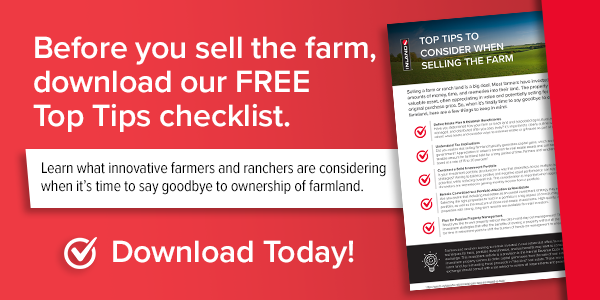Your interest in considering a 1031 exchange for selling your farmland reflects your commitment to preserving your family's wealth long after your property changes hands.
As you've learned in our previous articles, a 1031 exchange is a unique investment strategy that allows you to sell your investment property and defer capital gains tax when reinvesting the proceeds from your sale in like-kind real estate.
We also introduced the Delaware statutory trust (DST). This structure meets like-kind replacement property requirements of a 1031 exchange while offering several additional benefits that may be attractive to you. You may be wondering how the tax-deferral process works with a 1031 exchange, so this discussion focuses on the process and the requirements that must be met.
Basic Terminology
When conducting a 1031 exchange through a DST, specific terms are often used that you might not have heard before. Here are five terms you will want to remember.
- Like-kind property refers to any type of investment real estate used in a 1031 exchange
- The farm you intend to sell is known as your relinquished property
- The real estate (or DST interests) you intend to purchase is called your replacement property
- To complete your exchange, you must use a Qualified Intermediary (QI) which is a person or entity that will facilitate the transfer of proceeds in the exchange.
- Any proceeds from the sale of your relinquished property NOT reinvested in your replacement property is called boot and could be subject to capital gains tax
Rules of the Road

Now that you are equipped with this new vocabulary, here are a few essential rules that govern the 1031 exchange process:
● You can only acquire "like-kind" replacement property
● All proceeds from your relinquished property must be used for purchasing your replacement property
● Any debt on your replacement property (or any debt on your replacement property plus cash) must be equal to or greater than the debt on your relinquished property
● A QI must be used to hold your funds throughout the entire exchange process
● You have 180 days total to sell, identify and acquire the property involved in the 1031 exchange transaction
○ Day 1 – sell relinquished property
○ Day 45 – identify a replacement property
○ Day 180 – acquire replacement property
● Any unused proceeds may be subject to capital gains tax
Identifying Your Replacement Property
1031 exchange rules allow you to use one of three approaches to identify your replacement property:
The Three Property Rule
This rule states you may identify up to three potential replacement properties regardless of their value.
The 200% Rule
This rule allows you to identify an unlimited number of properties as long as the aggregate value is no more than 200% of the value of your relinquished property.
The 95% Rule
This rule allows you to identify an unlimited number of properties as long as you acquire at least 95% of the value of the identified properties.
Utilizing a DST
While these options are designed to help you identify a suitable replacement property for your exchange, many exchangers discover that the 45-day identification deadline goes by quickly. As a result, investors may find it challenging to find the right property in time.
For that reason, you may want to consider selecting a DST as one of your replacement properties (under the Three Property Rule). That way, if it looks like you'll be unable to close on your other identified property or properties, you can generally close on a DST quickly. The DST has earned a reputation as an effective "backup" among many exchangers. We will discuss the use of DST 1031 exchanges in greater detail in upcoming posts.
Align with Professionals
We hope this discussion has helped explain several requirements you will need to satisfy with your 1031 exchange. And while these rules may appear confusing, they needn't be when you align yourself with a financial professional who has years of experience assisting clients with 1031 exchanges and DST investments.
To learn more about how Inland Private Capital Corporation works with financial professionals to help ag landowners like you to protect your family legacy, fill out the form on the contact us page. A representative will call you within 24-48 hours.
This communication is not intended as tax advice.
This website is neither an offer to sell nor a solicitation of an offer to buy any security which can be made only by a prospectus, or offering memorandum, which has been filed or registered with appropriate state and federal regulatory agencies, and sold only by broker dealers and registered investment advisors authorized to do so.
The Inland name and logo are registered trademarks being used under license. "Inland" refers to some or all of the entities that are part of The Inland Real Estate Group of Companies, Inc. which is comprised of a group of independent legal entities some of which may be affiliates, share some common ownership or have been sponsored and managed by such entities or subsidiaries thereof including the Inland Real Estate Investment Corporation (Inland Investments) and Inland Securities Corporation. Inland Securities Corporation, member FINRA/SIPC, is dealer manager and placement agent for programs sponsored by Inland Investments and Inland Private Capital, respectively. For more information on Inland Securities Corporation, visit FINRA BrokerCheck.
